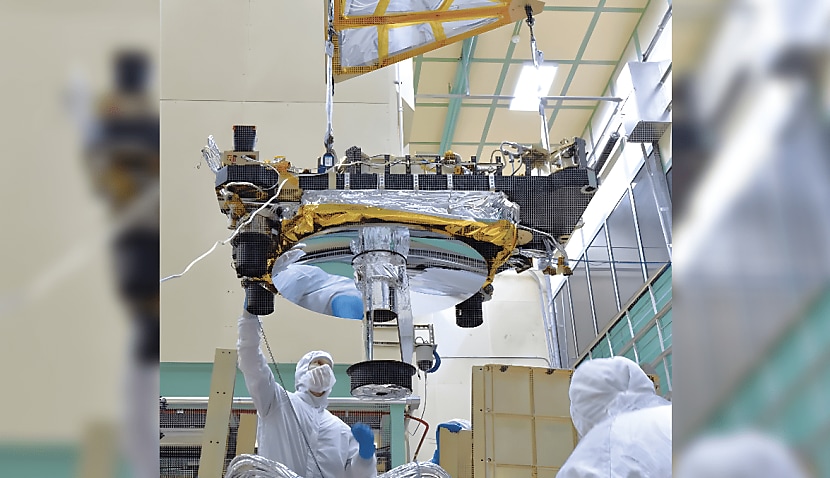
Dr Petra Heil and Dr Alex Fraser are collaborators in the Earth Dynamics Geodetic Explorer (EDGE) proposal, which will attempt to monitor the effects of climate and vegetation change.
This mission would use high-resolution satellite laser altimeters to observe the three-dimensional structure of terrestrial ecosystems and the surface topography of glaciers, ice sheets and sea ice as they currently undergo rapid change in response to human activity.
Dr Fraser, from the Australian Antarctic Program Partnership at the University of Tasmania, said that their proposal involves one satellite measuring two vital signs of Earth: vegetation cover and the frozen cryosphere, such as land glaciers and sea ice.
“Laser altimetry from space has become a key tool in our understanding of sea ice,” said Dr Fraser
“Thanks to satellite laser altimetry, we have a much better understanding of the thickness of individual ice floes, as well as how far ocean waves can travel through ice in the marginal ice zone.
"The next-generation satellite instrument we want to build will have 40 laser beams, compared to the six beams in the current altimeter on NASA’s ICESat-2.
“Our EDGE satellite will be capable of measuring vertical differences with an accuracy of less than three centimetres from an orbit 390 kilometres above the Earth.
“For our Antarctic research, this will provide unprecedented year-round information about the thickness and roughness of sea ice in extremely high resolution.”
The proposal is being led by the Scripps Institution of Oceanography at the University of California, San Diego.
In total, NASA has selected four proposals for concept studies of space missions as part of the agency’s new Earth System Explorers Program.
Dr Heil, from the Australian Antarctic Division, said she was excited to learn that the EDGE mission has passed the first hurdle.
“We have been working on this proposal with our mostly US-based partners for more than two years,” she said.
“Despite recent progress in satellite altimetry, their sparse coverage and low repeat rates do not allow us to measure the short-term changes in the ice thickness, which are proxies for the dynamic changes to ice volume.
“An instrument with the capability of EDGE would revolutionise our understanding of the physics of the sea ice and give us a better grasp on the processes causing changes in its volume.
“The role of sea ice within the climate system is in the spotlight following the recent deficit in both Antarctic summer and winter sea-ice extent.”
NASA added in a statement that each of the four proposals would receive US$5 million to conduct a one-year mission concept study. In the end, two will go forward to launch with readiness dates expected in 2030 and 2032.

Adam Thorn
Adam is a journalist who has worked for more than 40 prestigious media brands in the UK and Australia. Since 2005, his varied career has included stints as a reporter, copy editor, feature writer and editor for publications as diverse as Fleet Street newspaper The Sunday Times, fashion bible Jones, media and marketing website Mumbrella as well as lifestyle magazines such as GQ, Woman’s Weekly, Men’s Health and Loaded. He joined Momentum Media in early 2020 and currently writes for Australian Aviation and World of Aviation.
Receive the latest developments and updates on Australia’s space industry direct to your inbox. Subscribe today to Space Connect here.









